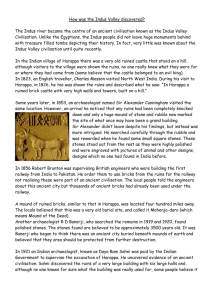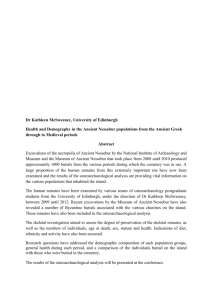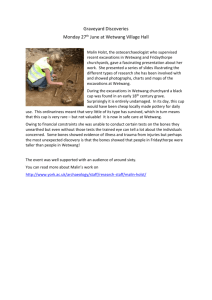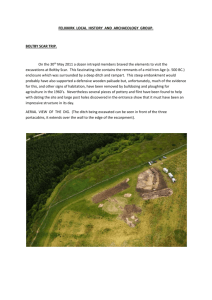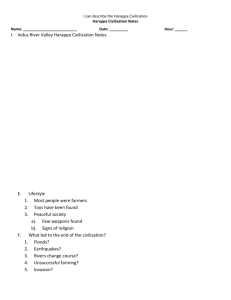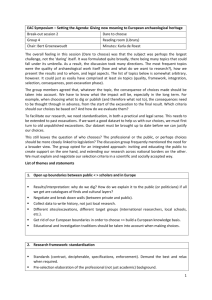MS Word - Ancient India
advertisement
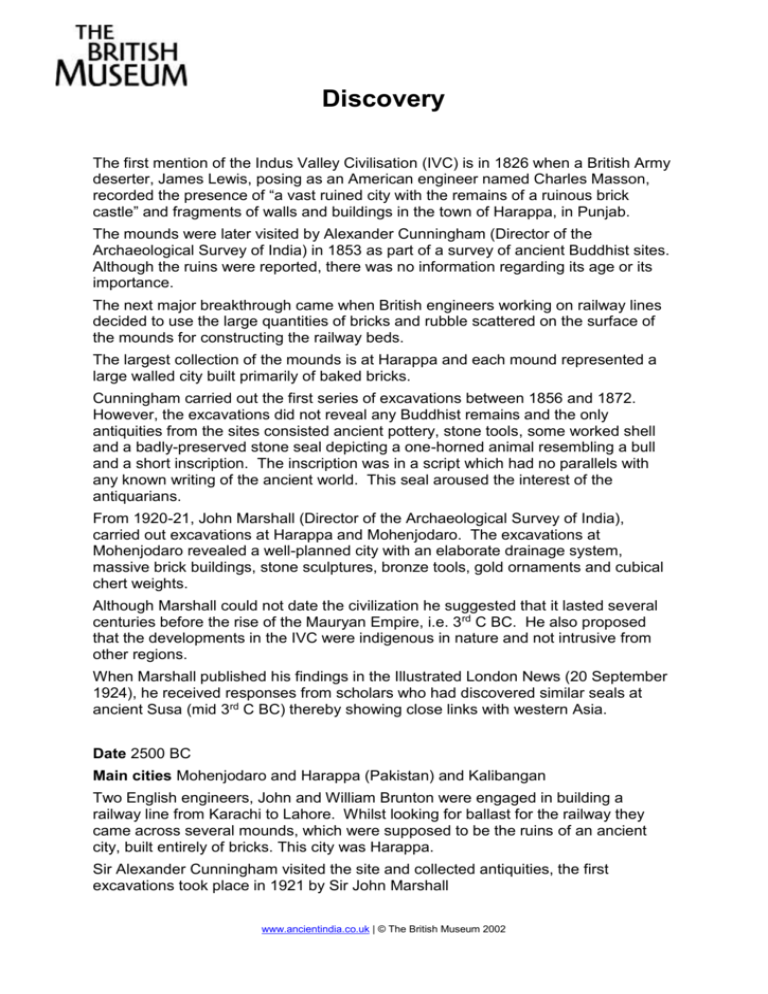
Discovery The first mention of the Indus Valley Civilisation (IVC) is in 1826 when a British Army deserter, James Lewis, posing as an American engineer named Charles Masson, recorded the presence of “a vast ruined city with the remains of a ruinous brick castle” and fragments of walls and buildings in the town of Harappa, in Punjab. The mounds were later visited by Alexander Cunningham (Director of the Archaeological Survey of India) in 1853 as part of a survey of ancient Buddhist sites. Although the ruins were reported, there was no information regarding its age or its importance. The next major breakthrough came when British engineers working on railway lines decided to use the large quantities of bricks and rubble scattered on the surface of the mounds for constructing the railway beds. The largest collection of the mounds is at Harappa and each mound represented a large walled city built primarily of baked bricks. Cunningham carried out the first series of excavations between 1856 and 1872. However, the excavations did not reveal any Buddhist remains and the only antiquities from the sites consisted ancient pottery, stone tools, some worked shell and a badly-preserved stone seal depicting a one-horned animal resembling a bull and a short inscription. The inscription was in a script which had no parallels with any known writing of the ancient world. This seal aroused the interest of the antiquarians. From 1920-21, John Marshall (Director of the Archaeological Survey of India), carried out excavations at Harappa and Mohenjodaro. The excavations at Mohenjodaro revealed a well-planned city with an elaborate drainage system, massive brick buildings, stone sculptures, bronze tools, gold ornaments and cubical chert weights. Although Marshall could not date the civilization he suggested that it lasted several centuries before the rise of the Mauryan Empire, i.e. 3rd C BC. He also proposed that the developments in the IVC were indigenous in nature and not intrusive from other regions. When Marshall published his findings in the Illustrated London News (20 September 1924), he received responses from scholars who had discovered similar seals at ancient Susa (mid 3rd C BC) thereby showing close links with western Asia. Date 2500 BC Main cities Mohenjodaro and Harappa (Pakistan) and Kalibangan Two English engineers, John and William Brunton were engaged in building a railway line from Karachi to Lahore. Whilst looking for ballast for the railway they came across several mounds, which were supposed to be the ruins of an ancient city, built entirely of bricks. This city was Harappa. Sir Alexander Cunningham visited the site and collected antiquities, the first excavations took place in 1921 by Sir John Marshall www.ancientindia.co.uk | © The British Museum 2002 1500 Harappan sites located. Area 680,000 sq km (twice the size of Mesopotamia or Egypt) Main Features Town Planning Comprises mainly of the citadel mound and lower township. The cities are also fortified. Citadel mound comprises the public structures such as the granary, the public bath (Mohenjodaro) The lower township is laid out in a grid fashion with a developed drainage system. It comprises of areas for residences and for specialised craft production. The houses are built of burnt brick and vary between one room structures to double storied buildings. Great Bath Used for public purposes. Equipped with a courtyard and rooms Dockyard at Lothal Walled settlements Protection from wild animals Monitoring the movement of goods Protection from floods www.ancientindia.co.uk | © The British Museum 2002

